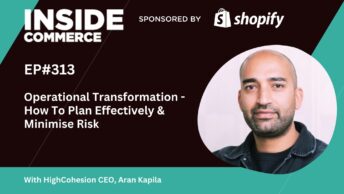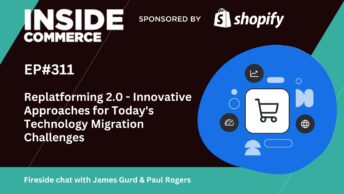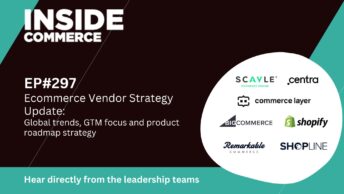An interview with Liam Downes, Director of Strategy and Success, and Zhivko Rusev, SVP Salesforce Practice, from leading ecommerce agency Tryzens.
Listen on your favourite player
Watch the video
Tl;dr
- What is SiteGenesis and why are there new options from Salesforce?
- How do the new options differ architecturally?
- How should SiteGenesis customers plan their next move?
- What’s the resource impact of migrating to the composable storefront?
Salesforce Commerce has a long history in the ecommerce platform market, from the acquisition of Demandware to the birth and growth of SiteGenesis. SiteGenesis was built before mobile dominated online shopping, so there are newer architectural options for SFCC customers. Many Salesforce customers are facing a big decision: stick with an old SiteGenesis version, or twist to either SFRA for a mobile-first solution or the newer composable storefront.
In this episode we aim to dispel some of the concerns with remaining on SiteGenesis. Customers don’t have to migrate if they have the right SI partner to maintain SiteGenesis but there are pros and cons of staying on this path that need to be understood, for example limitations with the roadmap, maintenance of 3rd party connectors, effort doing releases and maintaining performance.
The market is evolving, with some Salesforce customers having already moved to SFRA or composable storefront, which is making other retailers review their platform choice.
We’re joined by leading SFCC agency partner Tryzens, who also have experience delivering solutions on ecommerce platforms like Magento and Shopify. Listen to Liam and Zhivko share their views on how to approach Salesforce migrations and what type/size of business is best suited to the modern SFCC solution and why.
Discussion notes
- Let’s start with the background: what is SiteGenesis and why are there new options from Salesforce?
- And let’s dispel some of the concerns with remaining on SiteGenesis: customers don’t have to migrate if they have the right SI partner but what are the pros and cons of staying on a SiteGenesis path, for example roadmap, releases, performance, security, connectors etc.?
- The market is evolving, for example Salesforce moving to SFRA and composable, which makes some retailers review their platform choice – in your experience, what type/size of business is best suited to the modern SFCC solution and why?
- Salesforce is now focusing on its composable approach: can you summarise how this option differs architecturally to SiteGenesis and what this means to an ecom team?
- We’ve seen some punchy numbers for SFRA migrations, from £500k to £1m, which basically makes it a replatforming project: what are you seeing in terms of the time and cost of move to SFRA and what are the biggest influences on the length/complexity?
- If you’re on SiteGenesism how do you plan for your next move, what do you need to consider to make a sensible decision on which option is right?
- You’ve built a front-end accelerator for the Salesforce composable solution – who’s it for, what does the accelerator provide?
- What’s the resource impact of composable – what are the minimum technical and operational skills retailers need in-house to handle this type of tech stack, do you have any customers who have no in house tech and you’re doing it all?
Want to suggest a topic or guest for a future episode? Contact us via the website or on LinkedIn.








